The Lumix DC-S5 is a smaller, more affordable version of Panasonic’s original mid-range, full-frame mirrorless camera, the Lumix DC-S1. Like that model, the DC-S5 comes with a 24.2 MP sensor and in-body stabilization with 5-axis compensation. Sensor shift also works in tandem with lens-based stabilization in suitably-equipped Lumix S-series lenses for up to 6.5 stops of shake reduction. There’s also a high-resolution, multi-shot mode using the IBIS system that combines eight frames to produce 96 MP images.
However, while substantially smaller than the original DC-S1, Panasonic has pared down some features and specs to make the DC-S5 more affordable. Instead of the 5.76 m-dot EVF of the S1, for instance, it has a lower-resolution 2.36 m-dot OLED viewfinder. And it has 3.0-inch, 1.84 m-dot fully articulating touchscreen to the rear instead of the larger 3.2-inch (2.1 m-dot) LCD of the DC-S1. The S5 also drops the XQD/CFexpress (Type B) card format and adopts two SD card slots, though only one is UHS-II compatible right now.
As for video, it’s perhaps unsurprising to see the Lumix S5 with very credible specs, such as full-frame 10-bit 4K 30p and up to 4K 60p video from an APS-C crop. Panasonic has also improved autofocus accuracy for body, face, and eye detection during video capture.
The Lumix DC-S5 has a mini HDMI port and USB-C with external charging, plus Wi-Fi and Bluetooth for wireless camera control and image sharing.
Key specifications:
- 24.2 MP BSI CMOS full-frame sensor
- 5-axis IBIS, up to 6.5 stops with Lumix S OIS lenses
- Contrast detect 225-point DFD AF system, object tracking and face detection
- Native ISO 100-51,200 with expansion to ISO 50 to 204,800
- 7 fps in AF-S, 5 fps in AF-C mode
- 2.36 m-dot OLED viewfinder
- 3.0-inch, 1.84 m-dot fully articulating touchscreen
- UHD 4K 30p or up to 4K 60p from APS-C size crop
- Wi-Fi, Bluetooth connectivity
- Dual memory slots: one SD (UHS-II ) and one SD (UHS-I)
Overall performance
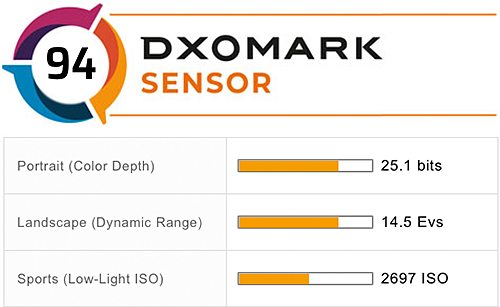 Click on the score chart above to open the Panasonic Lumix DC-S5 product page.
Click on the score chart above to open the Panasonic Lumix DC-S5 product page.
With a 24.2 MP full-frame BSI CMOS sensor, the Panasonic Lumix DC-S5 ranks very highly, achieving a DXOMARK score of 94. Sensor output is at a level similar to the Panasonic Lumix DC-S1, the Nikon Z 6 II, and the Sony A7C and A7 III mirrorless models.
The DC-S5’s sensor has very good maximum color depth of 25 bits at base and it has excellent dynamic range there (ISO 100) as well, peaking at 14.5 EV, which is very similar to the performance of the 24 MP BSI CMOS-equipped Sony A7 III. However, it doesn’t compare quite so well in our low-light ISO category, where we measured a sensitivity of ISO 2697. Note that this is a measured value derived from our minimum quality threshold of at least 9 stops (9 EV) of dynamic range, 18 bits color depth, and a 30 dB SNR.
In-depth comparisons
In this comparison we’ll look at the DC-S5’s sibling, the Panasonic Lumix DC-S1, which we suspect has the same sensor as the DC-S5. We’ll also compare it with a high-end offering, the Sony A9 II. While this Sony model adopts a 24 MP CMOS sensor, which is also a BSI type like that found in the S5, it’s a state-of-the-art “stacked” type with built-in memory. Although this type performs well across the board, there are some aspects of the design that impacts its output slightly, mainly at low ISOs.
Portrait (color depth)
The Panasonic Lumix DC-S5 performs well in terms of color depth at all ISO settings and has a particularly strong maximum of 25.1 bits at both the extended ISO 50 and base ISO 100 settings, which have the same measured sensitivity of ISO 70.
As the Lumix DC-S1 is likely to have the same sensor, it isn’t too surprising to see it perform similarly to the S5. However, while the Lumix DC-S5 is only fractionally behind the DC-S1, averaging around 0.2-0.3 bits lower between stops, the DC-S1 also has around a +0.3 EV advantage in sensitivity at each ISO setting throughout the range from ISO 200 onwards. The Sony A9 II behaves similarly to the DC-S1 in terms of better sensitivity up to ISO 800, with around a +0.3 EV improvement over the DC-S5 for a similar color depth. Above that, though, the A9 has a little lower color depth than the DC-S5.
Landscape (dynamic range)
Like the color depth response, the Panasonic Lumix DC-S5 performs very well at low ISOs, especially at base, where it has a wide dynamic range (DR) of 14+ stops (14.45 EV). The DC-S5 also has a very good response throughout the sensitivity range, with a more pronounced uplift in DR occurring between ISO 400 and ISO 800 than seen in the colour sensitivity results. At that point, the decline in DR is reversed with an 0.5 EV increase from ISO 400 to 13+ stops at ISO 800. Dynamic range drops again with a relatively large one-stop (1 EV) loss at ISO 1600, though after that DR falls around 0.75 EV for each one-stop increase in ISO.
For the most part, the DC-S5 and DC-S1 have practically the same dynamic range at each ISO setting throughout the range, with the same gain seen at ISO 800. However the DC-S1 has the near-identical +0.3EV benefit in sensitivity at each ISO setting shown in the color depth response, which suggests the DC-S5 has slightly higher noise levels. Compared to the Sony A9 II, the dynamic range of the Panasonic Lumix DC-S5 is around half a stop (+0.5 EV) wider, though like the DC-S1, this is offset somewhat by the Sony’s +0.3 EV advantage in measured sensitivity.
Sports (low-light ISO)
When comparing noise levels between cameras using the data below from an 18% grey patch as an example, the Panasonic Lumix DC-S5 has practically the same SNR response as the Lumix DC-S1 at base ISO. However, SNR is marginally lower than the DC-S1 at all other ISO settings and it’s behind by about a third of a stop (0.3 EV) in measured sensitivity.
As for the A9 II, the SNR in the DC-S5 is higher at base and then comparable at each ISO setting afterwards up to 51,200 ISO, where the Sony sees a jump. However, like the DC-S1, the A9 II has around a third of a stop (0.3 EV) advantage in measured sensitivity. This one-third stop (0.3 EV) improvement over the DC-S5 is backed up by our low-light score. At our selected 30 dB SNR threshold, where the camera has at least 9 EV dynamic range and an 18 bit color depth, the Lumix DC-S5 has a sensitivity of ISO 2697 against ISO 3333 for the Lumix DC-S1, some -0.3 EV behind.
Conclusion
Given the smaller and lighter body, not to mention the price difference, the Lumix DC-S5 looks like a highly tempting alternative to the Lumix DC-S1 for those on a tighter budget. However, while the Panasonic Lumix DC-S5 is a very capable performer, with practically the same output as the excellent Lumix DC-S1, it has slightly higher noise levels and fractionally worse low-light performance. That’s all relative, of course; the Panasonic Lumix DC-S5 is still a superb performer and remains an excellent choice for a wide range of genres.
In this review, we have mentioned the Panasonic Lumix DC-S5’s most relevant rivals from its own and other brands. As usual, you can compare it with these and with other models and create your own comparisons and in-depth analyses using our interactive image sensor ranking tool.


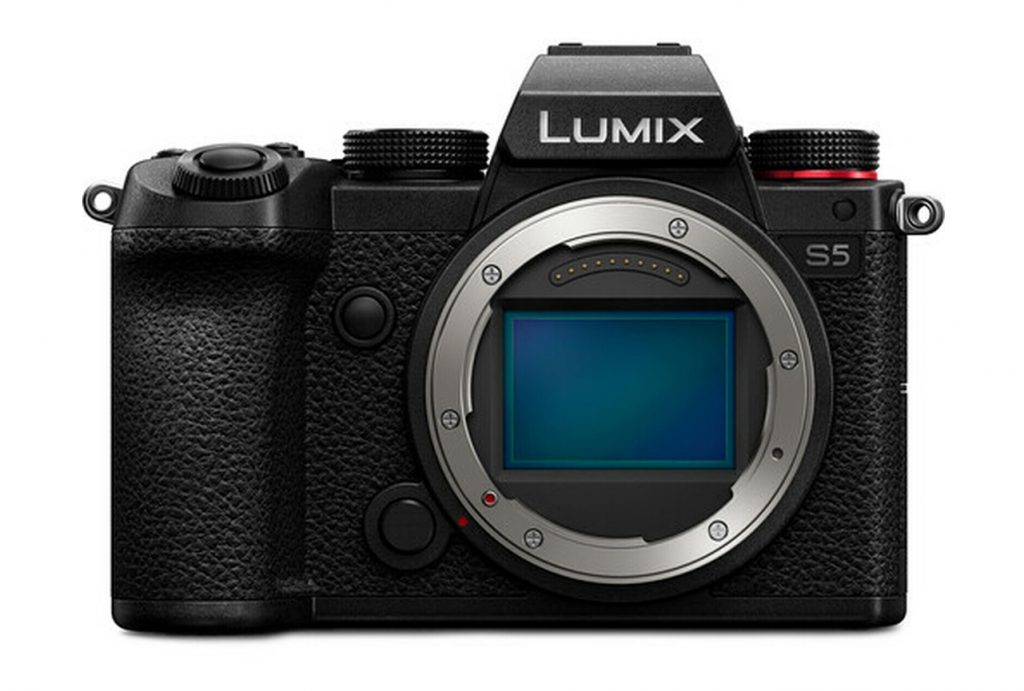


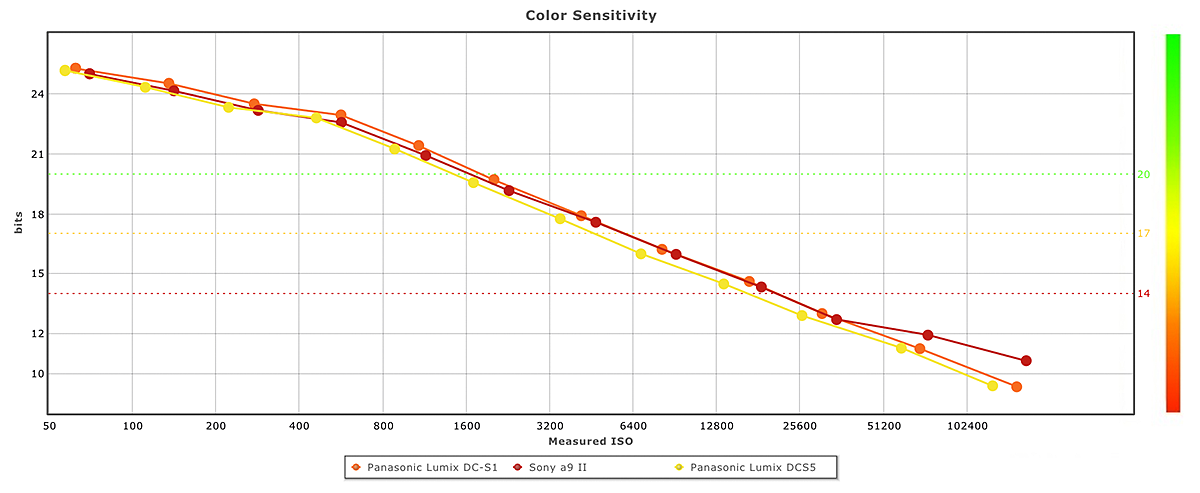
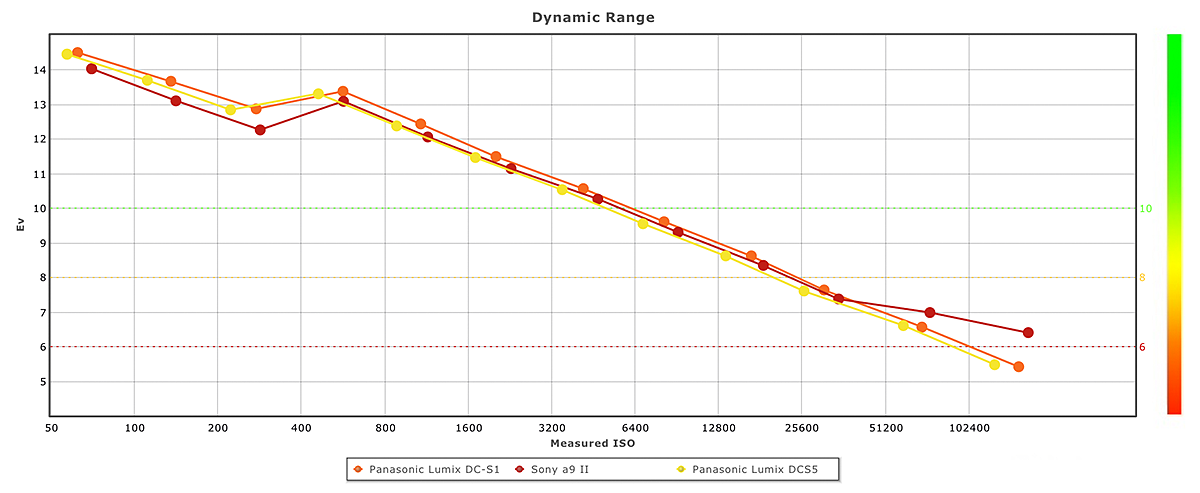
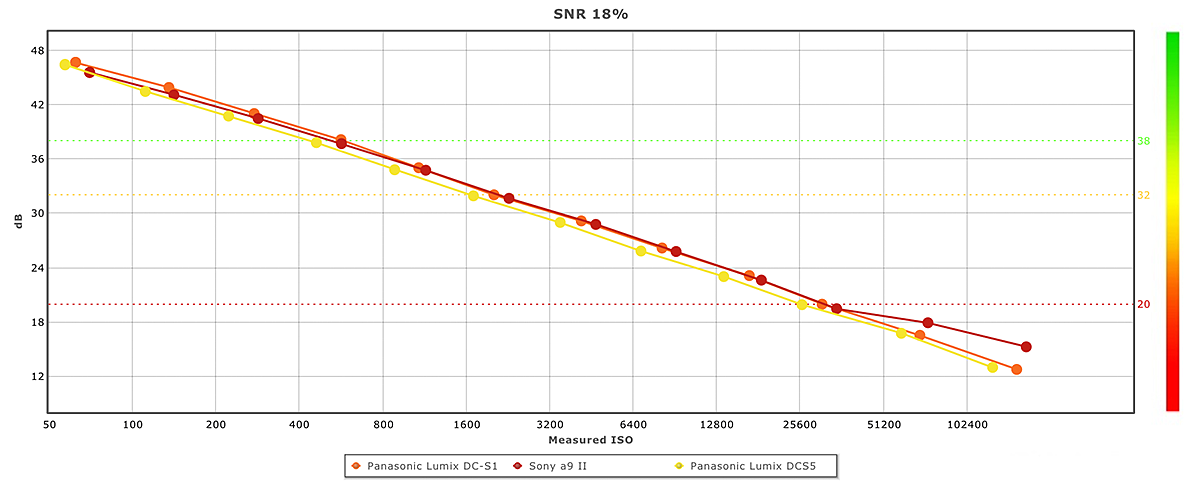
DXOMARK encourages its readers to share comments on the articles. To read or post comments, Disqus cookies are required. Change your Cookies Preferences and read more about our Comment Policy.